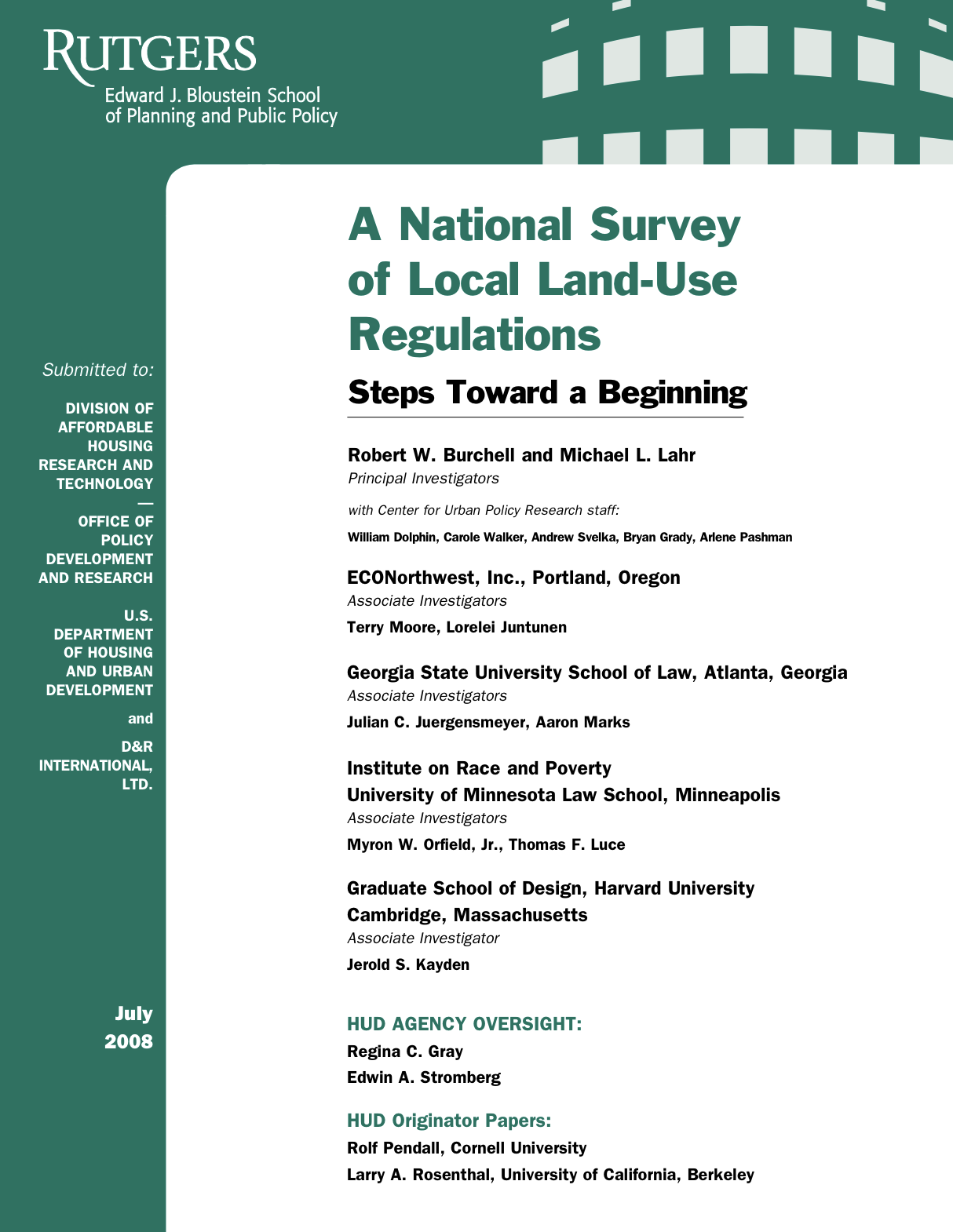The following report is the result of a year-long evaluation and refinement of a field instrument designed to gather information about local land- use regulations using focus groups of professionals from five cities in regions with disparate approaches to land-use regulation. The instrument is intended to enable a comprehensive national survey of land-use regulations. This national survey would gather data from municipalities and counties to determine the types of land- use regulations that exist in various sizes of communities and in various geographic locations throughout the United States. The survey is the recommendation of HUD’s America’s Affordable Communities Initiative 2004 Roundtable in its quest for basic information about local land-use regulations, and is the second phase of HUD’s Regulatory Barriers Initiative. The survey would indicate the degree to which communities have various types of residential zoning, what densities are permitted, whether mobile homes are allowed, and how often requests for rezoning to higher-intensity residential development are granted. The study would also address the level of development activity, permit- approval times associated with various types and sizes of developments, whether growth boundaries or adequate public facilities requirements exist locally, and whether affordable/workforce housing is being developed on a regular basis. Examples of hypothetical developments and questions about acceptance and approval times would also provide quantitative statistics. The study reported here consisted of pilot testing a survey questionnaire taken to five focus groups in five different cities across the United States. The cities were selected based on the different types of land-use systems likely to be in place and policies practiced by each of the following cities: New Brunswick, New Jersey (pre-test)• Portland, Oregon (Focus Group 1)
- Atlanta, Georgia (Focus Group 2)
- Minneapolis-St. Paul, Minnesota (Focus Group 3)
- Boston, Massachusetts (Focus Group 4)
These cities represent jurisdictions in: A home-rule state where cities have a
- reasonable level of autonomous discretion regarding land-use decisions (New Jersey) A state that has sophisticated state planning
- and an established means of regulating development outside the city’s bounds (Oregon) A state that is noted for its suburbanization• trends and related metropolitan congestion, yet one that is reacting to moderate the results of such policies (Georgia) A state that has fostered a strong regional
- government in one part, where city land use must confront an extra layer of regulation (Minnesota) A state that does not exert an enormous amount
- of oversight of local development policies but that has a long history of encouraging both affordable housing and community development (Massachusetts) The focus group cities would provide a severe field test for the survey instrument developed for the national survey. What was found at these various sites? First, state land-use policy and local development regulations are very different in each of these locations. This necessitated altering the survey instrument and development hypotheticals in order to be adaptable to each location.
